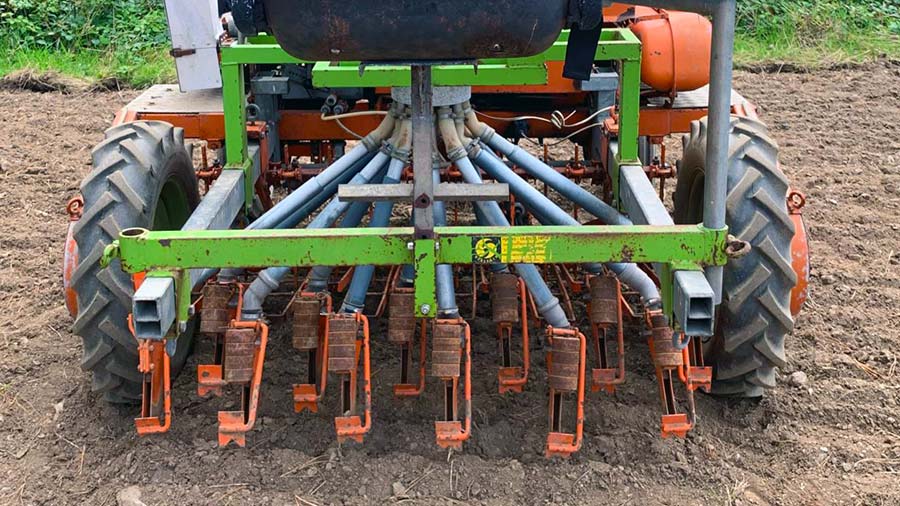Phacelia and oil radish prove most effective cover crop in veg trial
 © Ian Boase Elsoms Seeds
© Ian Boase Elsoms Seeds Growing phacelia or oil radish cover crops in vegetable rotations proved to be the most effective cover option in a trial investigating 26 different species and varieties.
Run by Agri-Tech Cornwall and Duchy College, the research trial found phacelia and oil radish outperformed other mixes and helped build and stabilise soil structure most effectively, offering the potential to safeguard future vegetable productivity.
See also: 4 growers’ methods of effective cover crop destruction
The trial
Covers such as legumes and oats were put to the test and a number of metrics recorded which included biomass production (residue), carbon nitrogen ratio and sequestration, crop height, ground cover and pest damage.
Independently assessed by Reading University and Duchy College, both phacelia and oil radish produced a significant amount of biomass, with tangible improvements in terms of nitrogen and carbon sequestration and nutrients in green material for the following crop.
Where a break from brassicas was required, phacelia generated the best results for improving soil organic matter – whether sown in the spring, summer or autumn.
In contrast, where a break from brassicas was not required, oil radish gave the greatest above-ground biomass.
This improved the carbon and nitrogen sequestration, says Ian Boase, vegetable specialist at Elsoms Seeds, and trial manager.
“At >61 days after March drilling, phacelia and oil radish produced 40t/ha and 35t/ha, respectively of above-ground biomass – each sequestering around 15t/ha of carbon and 500kg/ha of nitrogen,” he explains.
N fixation
Mr Boase estimates between one-third and half (166kg-250kg/ha) of nitrogen could be available to the next crop, but further trials would be required to quantify this.
The fixation of plant available nitrogen from these crops was of particular interest.
“Where growers may be inclined to look at legumes such as clover for nitrogen fixation, the trial has identified a critical limitation; they simply can’t establish quickly enough within a minimum 12-week rotation break.”
Another limitation is predation by pests. Egyptian clover was the worst affected by predation, with 80% damage.

Phacelia crop © Ian Boase Elsoms Seeds
Cover crop height
The trial also considered ground cover and crop height – an indicator of weed suppression efficacy.
Here, oil radish triumphed, reliably covering ground across all three sowing windows. The latter, influencing means of crop destruction and residue incorporation, proved a more complicated matter for growers, as oil radish exceeds 20cm in height.
“Single-pass systems are increasingly popular, used to reduce soil disturbance and to keep cover crop costs low,” he explains.
However, the equipment used in single-pass systems is designed to go over cereal stubble, so cover crops with residues higher than 20cm are likely to tangle and be problematic.
Therefore, he advises growers in these systems to favour shorter cover crops, or ones that are killed over winter for ease of incorporation.
“Ultimately, the grower needs to know what they want to achieve with a cover crop. This may be increasing soil organic matter and nutrient capture, improving soil structure and crop yields, preventing soil erosion or reducing fertiliser inputs.
“Once decided, then you can look at your rotations, available cover crops and destruction method,” says Mr Boase.
Trial setup
The cover crops were drilled during the three main vegetable break periods: February to March; mid-August to mid-September; and October.
Each had 12 weeks between drilling and destruction, emulating the shortest period possible between rotations.
Each plot was drilled at a standard depth into a randomised plot design at a mid-range seed rate. Every variety was repeated three times, producing 78 plots per period, each measuring 10.57sq m.
Keeping costs down was an important aspect of the trial, so there were zero applications of fertiliser, plant protection products or weed control inputs.

